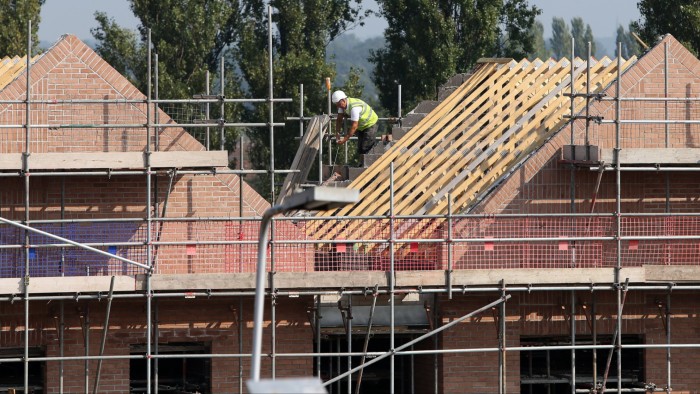Unlock the Editor’s Digest for free
Roula Khalaf, Editor of the FT, selects her favourite stories in this weekly newsletter.
The UK economy grew 0.5 per cent in February, beating analysts’ expectations and providing some positive news for chancellor Rachel Reeves as she contends with the impact of US President Donald Trump’s tariffs.
Friday’s monthly GDP figure from the Office for National Statistics was above both the 0.1 per cent increase forecast by economists polled by Reuters and January’s figure of zero growth, revised up from a previous estimate of a 0.1 per cent contraction.
Growth was widespread across services and manufacturing, and marked the fastest monthly pace since March 2024.
Chancellor Rachel Reeves said: “These growth figures are an encouraging sign, but we are not complacent.”
“The world has changed, and we have witnessed that change in recent weeks. I know this is an anxious time for families who are worried about the cost of living and British businesses who are worried about what this change means for them.”
The GDP figures predate Trump’s announcement on April 2 that he would impose steep import tariffs on most countries in the world, including a 10 per cent levy for the UK. The move triggered a sharp fall in global stock markets and prompted fears of a recession on both sides of the Atlantic.
On Wednesday, the US president announced a 90-day pause on most of his “reciprocal” duties, but the UK’s tariffs remain in place.
“UK economy gained ground in February but tariffs look set to stall progress,” said Yael Selfin, chief economist at consultancy KPMG UK.
“Ongoing trade volatility is set to significantly hamper business sentiment and constrain investment plans over the coming year,” she added, noting that the fall in energy prices following the tariffs announcement “may go a little way to mitigate the impact”.
The rises in business taxes which came into effect this month will also hit activity this year, alongside the impact of higher US tariffs, according to Ruth Gregory, economist at Capital Economics. This means growth would be “lower than our below-consensus forecast of 0.8 per cent in 2025 and 1.2 per cent in 2026”, she said.
Investors expect that the Bank of England will cut interest rates in May, and then lower borrowing costs twice more before the end of the year.
“With economic growth set to slow, the bank is likely to step up the pace of interest rate cuts to support the domestic economy,” said Selfin.
Separate ONS trade data published on Friday showed that exports of goods to the US, including precious metals, increased by £500mn in February 2025, marking the third consecutive increase. They are at the highest level since November 2022, suggesting that businesses are trying to anticipate the incoming US import tariffs.
In the three months to February the economy grew 0.6 per cent compared with the previous three months, the fastest pace since May 2024.
In February, manufacturing production was much stronger than expected with a 2.2 per cent increase. Output in the services sector rose 0.3 per cent, while construction increased 0.4 per cent.
Liz McKeown, ONS director of economic statistics, said: “The economy grew strongly in February with widespread growth across both services and manufacturing industries.”
She said computer programming, telecoms and car dealerships all had strong months, while in manufacturing, electronics and pharmaceuticals led the way. Car manufacturing also picked up after its recent poor performance.
Source link










